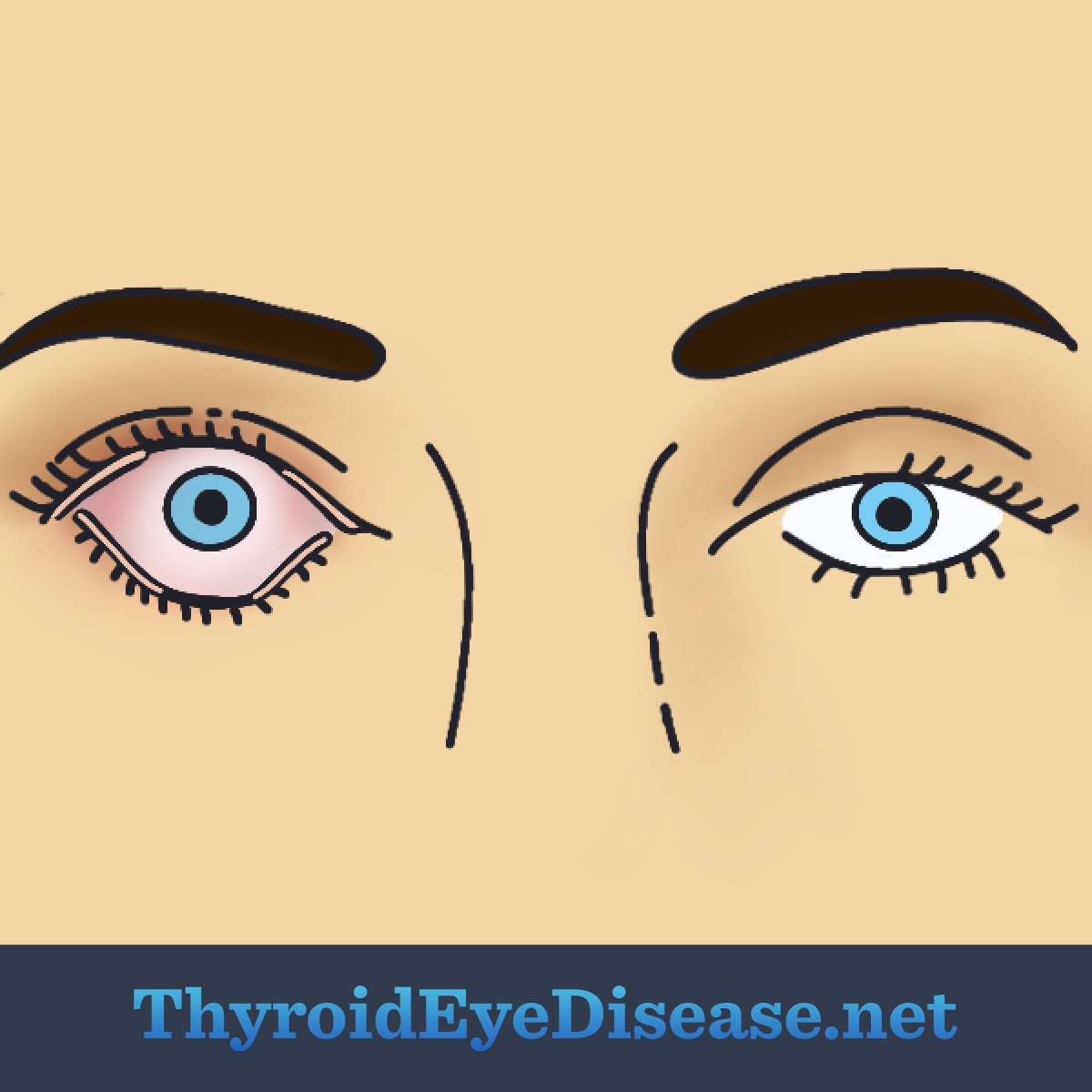What Are the Symptoms of Thyroid Eye Disease?
Reviewed by: HU Medical Review Board | Last reviewed: October 2021 | Last updated: September 2025
Thyroid eye disease (TED) is a rare autoimmune disease. Autoimmune means that the body’s immune system cannot tell the difference between healthy cells and invaders like viruses, fungi, or bacteria. Because it cannot tell the difference, the body begins to attack and damage healthy cells.1,2
Antibodies are proteins your body makes to kill germs. In TED, harmful antibodies attack the thyroid gland. This results in inflammation and damage to the muscles, connective tissues, and fat around the eyes. Damage and inflammation is progressive, with an active and inactive phase.1,3
Symptoms of TED are highly variable from person to person. Eye symptoms range from mild to severe, including:4
- Red, watery, and swollen eyes
- Eye pain and pressure
- Eyelids pulling back (retraction and lateral flare)
- Bulging eyes (proptosis, prop-toe-sis)
- Sensitivity to light
- Vision changes
- Misaligned eyes (strabismus, struh-biz-muss)
- Open sore on the surface of the eye (corneal ulcer)
Serious eye damage is more likely the longer TED goes without treatment.5
Eyelid retraction and eye inflammation
Figure 1. Retracted eyelid
About 9 out of 10 people with TED have eyelid retraction. Your doctor may refer to this as lateral flare. With this symptom, your eyelids look like they are pulling back from their normal position. This makes it hard to completely close your eyes. In some cases, closing the eyes is impossible.5
Every time you blink, your eyes are coated with a thin layer of tears. This layer of tears is known as a tear film.6
If your eyelids are no longer able to cover your eye, your tears may not be properly refreshed with blinking. The surface of your eye may also be exposed to air for a longer period of time. Dryness on the surface of the eye then leads to chronic irritation and sometimes inflammation. Inflammation may damage the eye, cause pain, and worsen the irritation of the dry eye.4
Eye irritation and inflammation can appear as:5
- Red eyes
- Watery eyes
- Gritty feeling or a feeling like something is in your eyes
- Swelling of the clear tissue that lines the eye and eyelids (chemosis, key-moe-sis)
- Eyelid swelling
Bulging eyes
Up to 6 out of 10 people with TED experience bulging eyes, known as proptosis or exophthalmos (ek-sof-thal-muhs). TED causes swelling of the muscle and fat behind your eyes. This causes your eyes to push forward in the socket. Bulging can affect 1 or both eyes.5
Bulging eyes also make it difficult to blink and completely close your eyes. Your doctor will use a special ruler to measure the severity of proptosis.5
Sensitivity to light
Pain when exposed to light is known as light sensitivity (photophobia). The irritation and dry eye problems that TED causes may lead to light sensitivity.5
Pain and pressure
Pain, discomfort, and pressure occur alongside swelling and irritation of your eyes. Pain can be in, around, or behind your eye.5
You might have pain when your eyes move. In TED, the connective tissues attached to your eyes swell and tighten. This makes it harder for your eyes to move when you look in different directions. This swelling and tightness can cause pain.5
Vision problems
Because TED impacts your eyes, it may come as no surprise that your vision may be affected.
Vision problems caused by TED include:5,7
- Blurred vision, which affects about 3 out of 10 people with TED
- Double vision, or seeing 2 of the same object. Also known as diplopia (dih-ploh-pee-uh), this may be caused by tight connective tissue around the eye.
- Optic nerve problems, which affect the bundle of nerves in the eye known as the optic nerve.
When inflammation and swelling behind the eye increases, the optic nerve can be squeezed. This is called optic nerve compression and is a serious complication. If this happens, symptoms include:5
- Loss of color vision
- Vision loss
- Decreased ability to see objects on the side of your visual field (decreased peripheral vision)
While treatments may help improve the symptoms of TED, many find living with a chronic condition to be unpredictable, as well as physically and emotionally challenging.
Taking selfies and sharing them with your TED specialist can help show changes to your face and eyes over time. This can also help with the emotional impact TED can have with friends and family. Sometimes, friends and family do not see the symptoms that TED can cause. Showing your pictures to the people who love and care about you can help.
